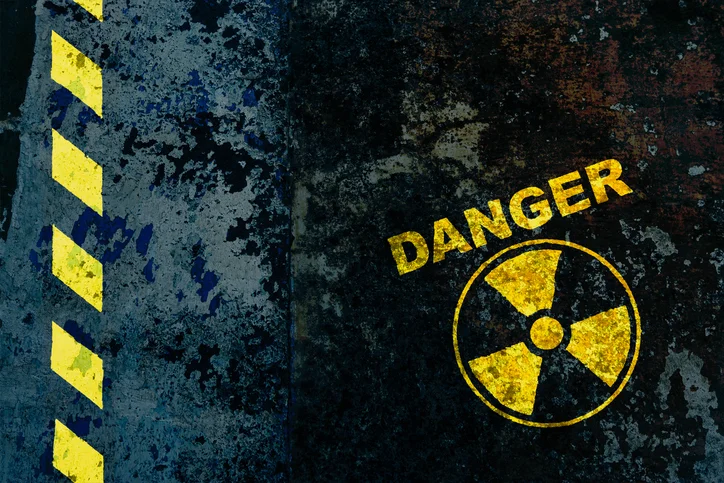Dr. David Samadi: How to protect yourself in a nuclear attack
/Dr. David Samadi: How to protect yourself in a nuclear attack
A false alarm blamed on an employee who “pushed the wrong button” placed the entire state of Hawaii in panic mode over the weekend after an emergency alert notification was sent out claiming a “ballistic missile threat inbound to Hawaii.” Residents and vacationers in the Aloha state and the state closest to Kim Jung Un’s missiles – only 4,600 miles from North Korea - were notified of the warning by television and radio as well as cell phones.
Approximately 38 minutes had elapsed from the time the initial threat warning was released to the time of everyone getting the “false alarm” message. This was an unacceptable and excessive amount of time for people having to endure experiencing fear, terror, and anger over a situation they had little to no control over.
Hawaii has been preparing for the possibility of a nuclear attack for months. Just last month, sirens began running drills in order to educate the public on how to handle a possible missile threat. On the day on which human error resulted in sending out a false alarm, the sirens did not sound.
If there was any lesson to be learned from this unfortunate incident, was that the emergency preparedness plan Hawaii had in place appears to be lacking. People vacationing in the island paradise weren’t prepared and even those living in the state were unclear on what to do initially believing it to be the real deal.
What is the danger from a nuclear attack?
To understand the magnitude of what a nuclear attack can do, it is important to understand the danger of the health effects it would entail. The number and types of fatalities and injuries depend on many factors – the nuclear device detonated, the number of people near the site of the explosion and in the fallout, and weather conditions. Most fatalities and injuries would result from the pressure of the shockwave, bodies being thrown, falling buildings, and flying debris. Thermal (heat) energy including the fireball can cause fatalities and severe burns to the skin and eyes.
For people who survive the attack, their health could suffer from the radiation depending on the type and amount of radiation absorbed by the body, how it was absorbed by the body whether inhaled or ingested, and the length of time exposed to it.
What can people do to survive and protect themselves?
Surviving a nuclear attack is possible but it does take preparedness in doing so. Just like people who live in earthquake or tornado prone areas need to be educated on what to do to protect themselves and their loved ones, all of us living on the mainland and especially Hawaii, need to be alert and ready to meet this possible nuclear threat by being knowledgeable on surviving and keeping injuries to a minimum.
In a nuclear attack, reducing exposure from fallout radiation is the most life-saving measure one can do. According to the U.S. Department of Homeland Security, there are three ways this can be done – distance, time, and shielding.
1. Time – Decrease the amount of time spent in areas where there is radiation
2. Distance – Place as much distance between yourself and the radiation source as possible. Doubling your distance from a point source divides the dose by four. If sheltered in a contaminated area, keep your distance from exterior walls and roofs.
3. Shielding – Create a barrier between yourself and the radiation source with a building or vehicle. Buildings – especially those made of brick or concrete – provide considerable shielding from radiation. Exposure is reduced by about 50% inside a one-story building and by about 90% a level below ground.
When a warning is activated of an impending nuclear attack, listen to authorities about whether to evacuate the area or to seek shelter underground as soon as possible.
Here are other important measures to take to survive a nuclear attack:
· Listen for information about evacuation routes, temporary shelters, and procedures to follow.
· If you happen to be outside when a nuclear attack occurs, lie face down on the ground protecting exposed skin such as placing hands under your body and remain flat until the heat and shock waves have passed.
· Cover your mouth and nose with a cloth or clothing to filter particulates from the inhaled air.
· If a cloud of debris is moving toward you, leave the area by a route perpendicular to the path of the fallout.
· If a cloud is not visible or the direction of the fallout is unknown, seek shelter. If possible, go as far below ground as you can. An underground concrete basement is best. Or go to the center of a high-rise building keeping away from windows or doors.
· If your clothing has been exposed to contaminated dust, remove outer clothing as soon as possible. If you can, shower being careful not to scrub harshly or scratch skin, wash your hair, and put on different clothes before going into a shelter.
· Shut off ventilation systems and seal doors or windows until the fallout cloud has passed which is usually several hours.
· Stay inside until authorities have given an all clear.
· Keep on hand up to 14 days’ worth of emergency supplies – food, water, medicine.
· If you are in a car near buildings, get out and go to the middle of a concrete building away from windows and doors.
· If you are on the beach and there is no structure to go inside of, look for a cave.





































































